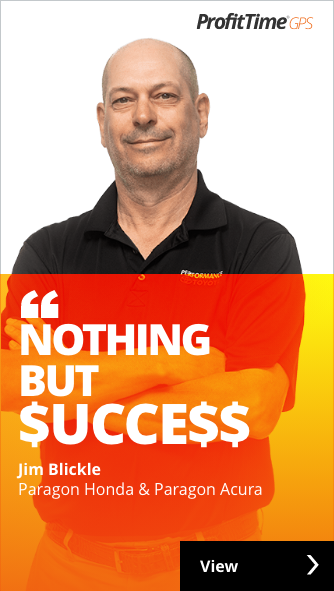A Look Behind Record-Setting Dealership Profitability
A piece in Automotive News this week underscores a remarkable achievement by dealers across the country. By the end of September, dealership net profit surpassed $3 million for the current year, topping the record $2.1 million in net profit dealers reported for all of 2020.
Even better, analysts expect the dealer-favorable market  conditions that have occurred so far this year—strong demand for new and used vehicles and limited supplies of both—will carry into 2022, creating even richer net profits for dealers.
conditions that have occurred so far this year—strong demand for new and used vehicles and limited supplies of both—will carry into 2022, creating even richer net profits for dealers.
I am happy for dealers and their families. Those who want to expand and grow their businesses are blessed with cash-on-hand and profit-producing tailwinds for the foreseeable future. Those who want to exit the business are largely blessed with a buy/sell environment that rewards their recent record-setting profit performance.
But there’s a reality of the current state of dealership profitability that isn’t getting much attention, and I feel obligated to share it here. The reality relates to the used vehicle department, where I’ve seen a marked change in the level of discipline and focus dealers and managers apply to their inventory management:
Consider used vehicle pricing. We remain in an era of what I’d call “explore and exploit” pricing strategies. Dealers and managers can almost put any price on a vehicle and it will eventually sell. I see signs that dealers and managers aren’t analyzing the retail price positions of their used vehicles with the analytical depth and frequency many previously applied. There are also far too many high-risk/low return cars (e.g., Bronze vehicles in the ProfitTime system) that are priced higher than competing cars in the market and, in many cases, higher than the low-risk/high return vehicles dealers carry in their own inventories.
Consider used vehicle age management. As with used vehicle pricing, dealers and managers have relaxed age management strategies. In the current market, 30- and 45-day old cars get far less attention than they should—particularly when the vehicles represent high risk/low return investments. I fully appreciate why age doesn’t matter right now. In many cases, the aged inventory is selling and, even if a retail sale took a little longer and produces little or negative gross, the dealership still made money in F&I and service on the vehicle. Alternatively, some dealers and managers aren’t worried about aged vehicles because they know, at least for the moment, they can wholesale the vehicles that don’t sell at retail and likely make money.
Consider used vehicle stocking. Dealers deserve much credit for recognizing the necessity to source vehicles beyond the two channels they’ve depended on for years—trade-ins and auctions. Today, more dealers and managers are proactively sourcing from multiple channels, from their service lanes to the street. But it seems that for every dealer who’s diversified their sourcing channels, there is another who hasn’t moved beyond looking to third-party lead sources to supplement inventory. Some of these dealers are purposely staying away from auctions because they don’t want to pay high prices for inventory, even if they need the cars. The end result: While some stores are breaking volume records, others are lagging the sales volumes they achieved in the past. No one’s necessarily complaining about stocking and selling fewer cars. After all, there’s an inventory shortage and profits are already sky-high—two justifications for holding the present course.
I’m not sharing these observations to detract from the record-setting profitability dealers currently enjoy. Rather, my goal is to highlight how dealers have achieved record profits and sales with lesser levels of inventory management discipline and focus—a mindset that will no doubt come back to bite some dealers as the market becomes less dealer-favorable sometime next year.
When that time arrives, the dealers who have maintained disciplined age, pricing and stocking strategies, even in a market where such disciplines don’t seem necessary, will be in a better place. They’ll be like athletes who maintain their diet and exercise regimens in the off-season, arrive at training camp and leave with less pain and injury than those who weren’t ready.
The post A Look Behind Record-Setting Dealership Profitability appeared first on Dale Pollak.

















